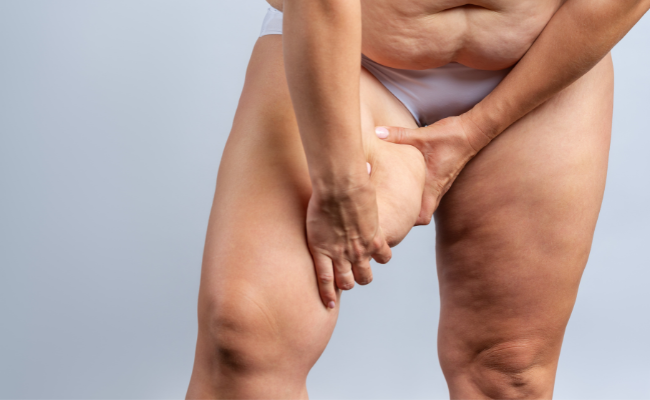How to Treat Lipoedema?
- September 29, 2023
- No Comments

What is Lipoedema?
Lipoedema is a persistent medical condition characterized by the abnormal buildup of fat, primarily in the legs and buttocks, resulting in a disproportionate appearance. Predominantly observed in women, this condition can lead to pain, swelling, and a reduced quality of life. Frequently misdiagnosed or overlooked, raising awareness and fostering an understanding of the condition are imperative for effective management. Lipedema manifests as an anomalous accumulation of fat in the lower body, mainly impacting the legs and occasionally extending to the arms. This condition induces pain and hampers daily activities. In contrast to regular fat, lipedema does not respond to traditional diet and exercise. Although a definitive cure remains elusive, available treatments provide relief and contribute to overall well-being.
Why Does Lipoedema Occur?
The exact cause of lipoedema is not fully understood, but it is believed to involve a combination of genetic and hormonal factors. Hormonal changes, such as those occurring during puberty, pregnancy, or menopause, may contribute to the development or exacerbation of lipoedema. Genetic predisposition also plays a role, as the condition often runs in families.
How Does Lipoedema Manifest?
Lipoedema is characterized by the abnormal distribution of adipose tissue, leading to a symmetrical buildup of fat in the lower body, particularly the legs and buttocks. Common signs and symptoms include:
- Enlarged and Tender Fat Deposits: The affected areas exhibit an excess of soft, fatty tissue that is often sensitive or painful to the touch.
- Easy Bruising: Individuals with lipoedema may experience easy bruising due to fragile blood vessels within the affected tissue.
- Swelling: Progressive swelling, often extending from the hips to the ankles, is a common feature. The swelling may worsen with prolonged standing or sitting.
- Disproportionate Appearance:Disproportionate Appearance: The upper body typically remains unaffected, creating a distinct disproportion between the upper and lower body.
Treatment Solutions for Lipoedema:
While lipoedema is a chronic condition that cannot be cured, various treatment options can help manage symptoms and improve the overall quality of life for individuals with the condition.
- Compression Therapy: The use of compression garments, such as compression stockings or leggings, can help reduce swelling and provide support to the affected limbs. Properly fitted compression garments are essential for optimal results.
- Decongestive Lymphatic Therapy (DLT): DLT is a comprehensive approach that includes manual lymphatic drainage, compression therapy, exercise, and skin care. It aims to reduce swelling, improve lymphatic flow, and enhance overall function.
- Healthy Lifestyle Practices: Adopting a healthy lifestyle, including regular exercise and a balanced diet, can contribute to weight management and overall well-being. Low-impact activities like swimming or walking may be particularly beneficial for individuals with lipoedema.
- Liposuction: In some cases, liposuction may be considered for the removal of excess fat deposits. Water-assisted liposuction, tumescent liposuction, or other specialized techniques may be employed to target lipoedema fat.
- Medication: Medications, such as diuretics, may be prescribed to manage fluid retention and reduce swelling. However, their effectiveness varies, and they are often used in conjunction with other treatment modalities.
- Psychological Support: Living with lipoedema can have a significant impact on mental health. Psychological support, including counseling or support groups, can help individuals cope with the emotional aspects of the condition.
Benefit Points of Lipoedema Treatment:
- Pain Reduction: Effective management of lipoedema can lead to a significant reduction in pain and discomfort associated with the condition.
- Improved Mobility: By addressing swelling and promoting overall limb health, treatment options contribute to improved mobility and the ability to engage in daily activities.
- Enhanced Quality of Life: Implementing a tailored treatment plan can result in an improved overall quality of life, allowing individuals with lipoedema to lead more fulfilling and active lives.
- Prevention of Complications: Managing lipoedema can help prevent complications such as cellulitis or venous insufficiency, which may arise due to prolonged swelling and tissue changes.
- Body Confidence: Addressing the physical symptoms of lipoedema can positively impact body image and self-esteem, promoting greater body confidence.
Comments (0)